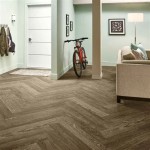Laying Engineered Wood Flooring On Tiles: A Comprehensive Guide
Engineered wood flooring offers a desirable alternative to solid hardwood, providing a similar aesthetic appeal with enhanced stability and resistance to moisture. A common question arises regarding the feasibility of installing engineered wood flooring directly over existing tile surfaces. This article provides a comprehensive overview of the process, addressing key considerations, preparation steps, installation techniques, and potential challenges associated with laying engineered wood flooring on tile.
The decision to install engineered wood flooring over tile often stems from a desire to avoid the disruptive and costly process of tile removal. Removing existing tile can be labor-intensive, create significant dust and debris, and potentially damage the subfloor. Laying engineered wood directly over the tile surface can be a faster and more economical solution, provided certain conditions are met and proper procedures are followed. Ignoring these critical factors may lead to unsatisfactory results, including uneven flooring, squeaking, or even premature failure of the engineered wood.
Assessing Tile Subfloor Suitability
Before proceeding with the installation, a thorough assessment of the existing tile substrate is crucial. The suitability of the tile for overlaying with engineered wood depends on several factors, including the condition of the tile, its levelness, and its compatibility with the chosen installation method. A careful examination of the existing tile will help to determine the best approach for a successful engineered wood flooring installation.
Firstly, the tile surface must be structurally sound. Any loose, cracked, or broken tiles must be repaired or replaced. Loose tiles can create voids beneath the engineered wood, leading to instability and potential damage. Cracked tiles can propagate further under the pressure of foot traffic, eventually compromising the flooring surface. Replace any damaged tiles and ensure they are securely bonded to the subfloor with appropriate adhesive. If the damage is extensive, professional tile repair might be necessary.
Secondly, the tile surface should be relatively level. Minor imperfections can often be addressed with self-leveling compound, but significant variations in height can pose a challenge. Use a long level (at least 6 feet) to check for any dips or humps in the tile surface. Significant height differences can create unevenness in the engineered wood flooring, leading to an unsightly appearance and potential tripping hazards. Address any areas of significant unevenness with self-leveling compound before proceeding with the installation.
Thirdly, consider the type of tile and its texture. Highly textured or porous tiles might not provide a suitable surface for direct adhesion. Smooth, non-porous tiles are generally more suitable for glue-down installations. If the tiles are heavily textured, the adhesive might not bond effectively, leading to loose or unstable flooring. For floating installations, the texture of the tile is less of a concern, but a smooth, even surface is still desirable for optimal performance of the underlayment.
Finally, investigate the type of grout used between the tiles. Wide or deeply recessed grout lines can create an uneven surface that needs to be addressed. The grout lines can telegraph through the engineered wood flooring, resulting in an undesirable appearance. Filling the grout lines with a cement-based patching compound can create a smooth, uniform surface for installation.
Preparation Steps for Installation
Once the suitability of the tile subfloor is established, proper preparation is essential for a successful installation. This involves cleaning the tile surface, addressing any unevenness, and selecting the appropriate underlayment or adhesive.
Begin by thoroughly cleaning the tile surface. Remove any dirt, dust, grease, or wax using a suitable cleaner. A TSP (trisodium phosphate) solution can be effective for removing stubborn grease. Rinse the surface thoroughly with clean water and allow it to dry completely. A clean surface is crucial for proper adhesion of the adhesive or underlayment.
Next, address any unevenness in the tile surface. As mentioned earlier, minor imperfections can be corrected with self-leveling compound. Follow the manufacturer's instructions carefully when applying the compound. Ensure that the compound is properly mixed and spread evenly across the surface. Allow the compound to dry completely before proceeding with the next step. For deeper grout lines, use a cement-based patching compound or grout filler to bring them level with the tile surface. Ensure the patching compound or grout filler is fully cured before proceeding.
Select the appropriate underlayment or adhesive, depending on the chosen installation method. For floating installations, choose an underlayment that is specifically designed for use over hard surfaces like tile. The underlayment should provide cushioning, sound insulation, and moisture protection. For glue-down installations, select an adhesive that is compatible with both the engineered wood flooring and the tile surface. Consult the manufacturer's recommendations for the appropriate adhesive type. Consider also the moisture level of the subfloor. Moisture testing is essential for ensuring the integrity of the installation. A moisture barrier may be required, especially in below-grade installations or in areas with high humidity.
Acclimatize the engineered wood flooring to the room's environment before installation. Store the flooring in the room where it will be installed for at least 48 to 72 hours. This allows the wood to adjust to the temperature and humidity levels, minimizing expansion and contraction after installation. Failing to acclimatize the flooring can lead to gaps or buckling after installation.
Installation Methods and Techniques
There are two primary methods for installing engineered wood flooring over tile: floating and glue-down. Each method has its advantages and disadvantages, and the choice depends on the specific conditions and preferences.
The floating installation method involves laying the engineered wood flooring over an underlayment without directly adhering it to the tile surface. The planks are typically connected using a click-lock system, creating a continuous floating surface. This method is generally easier and faster than glue-down installation. It also allows for easier removal or replacement of the flooring in the future. The floating method is particularly suitable for situations where a moisture barrier is required or where the tile surface is slightly uneven. Ensure the underlayment provides sufficient cushioning and sound insulation. Follow the manufacturer’s instructions for installing the locking mechanism of the planks, ensuring proper alignment and secure connections.
The glue-down installation method requires adhering the engineered wood flooring directly to the tile surface using a suitable adhesive. This method provides a more solid and stable feel underfoot compared to the floating method. It also allows for greater design flexibility, as the planks can be laid in various patterns. The glue-down method is best suited for smooth, level tile surfaces and requires careful preparation and attention to detail. Apply the adhesive evenly using the recommended trowel size. Ensure that each plank is properly aligned and pressed firmly into the adhesive. Follow the manufacturer’s instructions for the adhesive drying time before allowing foot traffic. Proper ventilation is crucial during and after the glue-down installation to allow for the adhesive to cure properly.
Regardless of the chosen installation method, it is essential to follow the manufacturer's instructions carefully. These instructions provide specific guidance on the installation process, including recommended tools, techniques, and adhesive types. Failure to follow the manufacturer's instructions can void the warranty and lead to unsatisfactory results.
Maintain expansion gaps around the perimeter of the room and around any vertical obstructions, such as pipes or doorways. These gaps allow for the natural expansion and contraction of the wood due to changes in temperature and humidity. Covering these gaps with appropriate trim, such as baseboards or quarter-round molding, will provide a finished appearance.
Regularly check the alignment and levelness of the planks during installation. Use a level to ensure that the planks are laying flat and that there are no gaps or overlaps. Correct any imperfections immediately to prevent them from affecting the overall appearance of the floor.
Consider using transition strips where the engineered wood flooring meets other types of flooring, such as carpet or vinyl. Transition strips provide a smooth and seamless transition between different floor coverings, preventing tripping hazards and protecting the edges of the flooring.
After installation, clean the floor thoroughly using a cleaner that is specifically designed for engineered wood flooring. Avoid using abrasive cleaners or excessive water, as these can damage the finish and cause warping. Protect the floor from scratches and dents by using furniture pads under the legs of heavy furniture.
Consider applying a protective coating to the engineered wood flooring to enhance its durability and resistance to wear and tear. Consult the manufacturer's recommendations for the appropriate type of coating. Regular maintenance, including sweeping, vacuuming, and occasional damp mopping, will help to keep the floor looking its best for years to come.

Can You Install Wood Flooring Over Tiled Floors Havwoods

How To Install Lock Engineered Hardwood Flooring

Can You Install Wood Flooring Over Tiled Floors Havwoods

Discover How To Lay Wood Floors Over Tile Discount Flooring Depotdiscount Depot Blog

Install Hardwood Flooring Over Tile Floor Double Glue Down Method

Install Hardwood Flooring Over Tile Floor Double Glue Down Method

How To Install Lock Engineered Hardwood Flooring

How To Combine Tile And Wood Flooring Rubi Blog Usa

Can You Install Wood Flooring Over Tiled Floors Havwoods

How To Install Hardwood Flooring For Beginners
Related Posts








